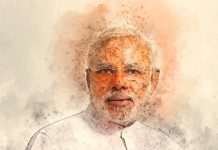- The Supreme Court decided that the office of the Chief Justice of India (CJI) is an open authority under the Right to Information (RTI) Act.
- A five-judge Constitution Bench headed by Chief Justice Ranjan Gogoi maintained a Delhi High Court administering of 2010.
- Excused three interests recorded by the Secretary-General and the Central Public Information Officer (CPIO) of the Supreme Court.
Origin of the case:
- RTI extremist documented a PIL “Whether all Supreme Court judges had pronounced their benefits and liabilities to the CJI following goals went in 1997
- CPIO of the Supreme Court said the office of the CJI was not an open authority under the RTI Act,
- The issue arrived at the Chief Information Commissioner (CIC), coordinated disclosure of data.
- The Supreme Court moved toward the Delhi High Court against the CIC request.
- Delhi High Court in 2009 Judgment “the office of the Chief Justice of India is an open authority under the RTI Act and is secured by its arrangements”.
- The Supreme Court then moved toward a bigger Bench involving then Chief Justice of Delhi High Court 2010 held that the past, judgment was “both legitimate and substantial and needs no impedance”.
- The Supreme Court in 2010 requested of itself trying the Delhi High Court request.
SC judgment 2019:
- The outcome is that the office of the CJI will currently engage in RTI applications. Under Section 2(f) of the RTI Act, data signifies “any material in any structure, including records, archives, reminders, messages, sentiments, advice’s, official statements, handouts, orders, logbooks, contracts, reports, papers, tests, models, information material held in any electronic structure and data identifying with any private body which can be gotten to by an open authority under some other law for the present in power”.
- The Supreme Court held that RTI can’t be utilized as an instrument of reconnaissance and that legal autonomy must be remembered while managing straightforwardness.
- The right to privacy is a significant angle and must be offset with straightforwardness while choosing to give out data from the office of the Chief Justice of India.
- The legal executive can’t work in all-out protection as judges appreciate a sacred post and discharge an open obligation.
Earlier judgments:
On December 16, 2015 (RBI versus Jayantilal N Mistry and Others), the Supreme Court noted: “It had since a long time ago become obvious that the Public Information Officers under the appearance of one of the special cases given under Section 8 of RTI Act have dodged the overall population from getting their hands on the legitimate data that they are qualified for.”
CBI out of RTI
- CBI is excluded from RTI.
- In 2005, the CBI was under it. The organization later moved for exclusion
- Authoritative Reforms Commission led by Moily had earlier suggested exclusion of the military from the RTI Act, yet had not made such a proposal for the CBI.
- While the CBI requested exclusion just for units in insight gathering, an exception was conceded in 2011 to the organization in general.
- Case moving the choice to absolve the CBI is pending with the Supreme Court.
Conclusion:
- The decision underlines the parity Supreme Court needs among straightforwardness and securing its freedom
- The progression is noteworthy as it makes the ways for RTI demands that will test the wildernesses of what has been a rather hazy framework.






Heya I am for the first time here. I find this website really useful & it helped me out a lot. I hope to give something back and help others like you helped me.
Thank you
Great wordpress blog here.. It’s hard to find quality writing like yours these days. I really appreciate people like you! take care
Thank you
An impressive share, Thanks for spending the time to discuss this, I feel strongly about it and love reading more on this topic. If possible, with your expertise, would you mind updating your blog with more details? It is highly helpful for me. Big thumbs up for this blog post!
Thank you
Just what I was searching for, thanks for putting up.
Welcome